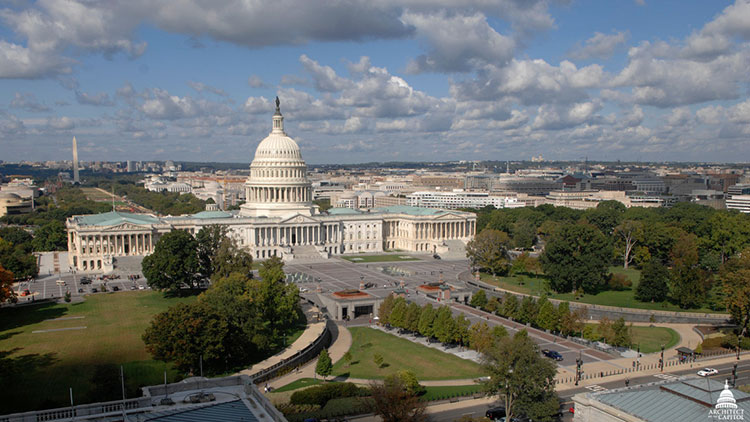NTCA to Senate: Experience Counts With Broadband Subsidies

Broadband got a lot of attention from the Senate Wednesday at an infrastructure hearing in the Senate Commerce Committee, including calls from a transportation official to protect the connected-car spectrum cable operators are convinced can be shared with their Wi-Fi offerings.
The almost three-hour hearing dealt with infrastructure broadly, including roads and bridges, but even the roadways issues dovetailed with broadband, including pitches for dig-once policies in which dark fiber or at least conduit are part of road projects.
Carlos Braceras, executive director of the Utah Department of Transportation, said it was important to protect vehicle-to-vehicle short-range (DSRC) spectrum so that cars could talk to bridges, stop signs and traffic lights.
The broadband provider witness, Shirley Bloomfield, CEO of NTCA-The Rural Broadband Association, was busy during the hearing answering a host of broadband-related questions and offering her input on the best way to make broadband part of any infrastructure buildout.
She said the best approach would be to work through the FCC's Universal Service Fund broadband subsidy program by fully funding it and targeting the money to people "who know what they are doing," a point she made repeatedly and which translated to the smaller operators she represents who already have broadband boots on the ground.
She also said that given that resources are limited they should be targeted to where they are most needed—rather than overbuilding existing plant.
Bloomfield also put in a pitch for making it easier to site towers and get easements and rights of way for broadband plant, saying it would be good to coordinate that on the federal, state and local levels. She gave FCC chairman Ajit Pai credit for focusing on those issues.
Broadcasting & Cable Newsletter
The smarter way to stay on top of broadcasting and cable industry. Sign up below
When Sen. Ed Markey (D-Mass.) asked whether she supported fully funding the E-rate schools and libraries USF fund, she said yes but not if it was to overbuild.
Bloomfield gave Pai credit for focusing on clearing away infrastructure obstacles. There was sentiment both on the witness panel and among the Republicans on the committee to include permitting reforms as part of any infrastructure package.
She also said she expected some news out of the FCC next week on one of the USF funds.
She was asked by Sen. Deb Fischer (R-Neb.) what progress the FCC has made on implementing the Remote Areas Fund, which was created back in 2011 to target hard-to-reach rural areas. She said as far as she knew the FCC had not taken steps to administer the fund and wondered whether Congress needed to step in.
Bloomfield said that, as with all the funds, lack of resources was an issue. She said that fully funding other subsidies would help by allowing carriers to build out further, meaning there would be less demand on such a fund, though always a need for the areas where it would be "astronomically difficult" to build out.
But she also said that chairman Pai was very focused on rural—the native Kansan has made closing the rural digital divide a priority—and said she thought Congress would hear more from him next week on his intentions for that fund.
Asked for her wish-list in any infrastructure package, Bloomfield boiled it down to four keys: 1. Fully fund USF—she praised the reforms but took issue with capping the high-cost fund. 2. Tax incentives, potentially, if coordinated with the FCC. 3. Streamlining regulatory process—she cited the Mobile Now Act, which would speed permitting and pole attachments, and eliminating some of the paperwork that disproportionately affects smaller carriers like her members; 4. And something she called "connecting the dots," by which she meant better connecting areas looking for connections with the providers who "know what they are doing."
Contributing editor John Eggerton has been an editor and/or writer on media regulation, legislation and policy for over four decades, including covering the FCC, FTC, Congress, the major media trade associations, and the federal courts. In addition to Multichannel News and Broadcasting + Cable, his work has appeared in Radio World, TV Technology, TV Fax, This Week in Consumer Electronics, Variety and the Encyclopedia Britannica.

